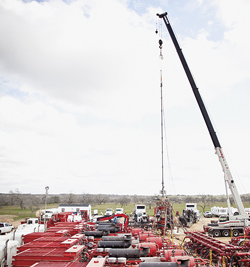
Weatherford has been awarded a license to market the Multi-Zone Stimulation Technology (MZST) well treatment process, developed by ExxonMobil Upstream Research Company. The MZST process can be used for hydraulic fracturing operations in tight gas, shale gas and CBM wells that target multiple reservoir zones, thick reservoir sections or long reservoir intervals, where multiple stimulation treatments are required. The MZST process allows stimulation in multiple payzones in a single operation, which enhances oil recovery and ultimately increases profitability. The process dramatically increases the number of pay zones fractured daily and reduces completion costs without compromising safety or well integrity—even from unconventional reservoirs with low permeability. There are two primary methods associated with the process—Just-in-Time Perforating (JITP) and Annular Coiled-Tubing Fracturing (ACT-Frac)—which deliver 40 or more zone-specific, customized treatments in a single well.
The JITP method can perform multi-zone stimulation in a single run in vertical, deviated and horizontal wells, using ball sealers for diversion between frac stages. The ACT-Frac method involves treatments being pumped at high flowrates down the annulus of coiled tubing to facilitate efficient, effective stimulation.
Microbial oil recovery technology
Migration Microbial Oil Recovery (MMEOR) is a new EOR technology that bridges proprietary biotechnology with petroleum engineering as a solution to increasing oil recoveries throughout the global petroleum industry. MMEOR was developed through technology transfer between biotechnology and petroleum engineering. This new field of Petro-bioengineering is proprietary technology developed by Microbes, Inc. The basic process is to convert oil-bearing rock formations into effective bioreactors. This concept allows oil reservoirs deep below the surface of the earth to sustain life and thrive under high temperatures and pressures in the absence of oxygen. Specifically selected microbes form a Petro-bioreactor in the porous reservoir rock, migrating outward from the wellbore. As the microbes metabolize portions of the crude oil, the result is improved oil recovery and beneficial bi-products.
Ceramic membrane technology treats produced water
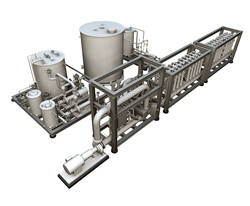
The ROSS System from Veolia Water Solutions & Technologies is a simplified, yet robust solution for the treatment of oilfield produced water. Based on CeraMem ceramic membrane technology, this system provides removal of oil and silica, as well as softening of the water simultaneously in a fully modular process train. When compared to conventional treatment, the system is a more effective, reliable and operator-friendly treatment process in a significantly smaller footprint. Due to its modular design and construction, the system is well-suited for incremental capacity expansions to oil production facilities. It also is ideal to ease bottlenecks in production from existing, underperforming or undersized water treatment plants.
In the case of steam assisted gravity drainage (SAGD) production, facilities typically recycle over 90% of produced water to generate steam for production. The closed water cycle makes produced water treatment a critical portion of overall oil production. Conventional treatment is comprised of a skim tank, induced gas floatation, oil removal filter, warm lime softener, after filter and weak acid cation resin softening. As a complex process train with no barrier technologies to stop the transmission of upsets, conventional treatment is especially vulnerable to upsets. The unpredictable, rapid onset of upsets in the produced water treatment process often results in unplanned maintenance and production losses. The use of ceramic membrane technology provides an absolute barrier against upsets, which are characterized by rapid increase of suspended solids and oils while producing high-quality effluent for reuse.
Produced water treatment system for EOR
Siemens Energy is supplying SNF SAS France, a chemical company specializing in polymers, with a produced water treatment system as part of the company’s plant expansion in the Petrocedeño oil field, in the Orinoco Belt in Venezuela. The system includes a Spinsep vertical flotation unit and a Monosep high-flow walnut shell filter to treat 10,000 bpd of produced water as part of the Petrocedeño EOR polymer field test project. The equipment is scheduled to be operational by the end of October 2012, and will be deployed on-site in 2013. The produced water treatment system used on this project will enable the polymer plant to mix the treated water with polymers for reinjection into the well to enhance oil recovery. Water will first flow to the Spinsep system for primary oil/water separation and then flow through the Monosep high-flow walnut shell filter for tertiary treatment. The vertical design and compact footprint of both the Spinsep flotation system and the Monosep high-flow walnut shell filter makes the system more economical than a typical flotation system. Additionally, the internal scrubbing design of the walnut shell filter eliminates external backwash system and its associated pumps, making operation easier and more trouble-free.
Chemical injection system for greater recovery
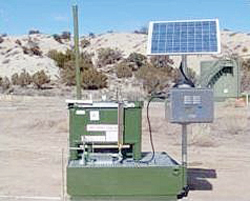
Field-tested and proven to be highly successful, Hoover Chemical Injection Systems has now replaced every outdated system in the San Juan basin Four Corners project. Engineered and manufactured by Hoover Container Solutions, the heart of this system is Hoover’s patented Liquitote Intermediate Bulk Container (IBC). The system is constructed of 10 gauge, 304 stainless steel with a 2B finish, or painted to your color of choice. The Liquitote is designed to keep contents safe, uncompromised and ready to deliver to the well. To further ensure safety, the Liquitote IBC sits on a secondary containment basin (Liquibasin) that is designed for 150% recovery. The low-profile Liquitote makes filling safer and easier from ground level and diminishes the effects of high winds. Unlike poly units, which may create dangerous static electricity and are adversely affected by high winds, the system does not create static electricity and is much more stable when properly secured. The technology captures released vapors in a vent return line and a pump fluid return line to prevent spillage, due to a clogged line. The system can accommodate a vent pipe to 10 ft in height, and all venting is located at a minimum of 3 ft from any power source. The pumping system and the solar array can be installed on top of the secondary containment basin and the easy-to-install systems can be customized to meet customer-specific needs. Optional telemetry and fluid level monitoring systems complete the package.
University of Wyoming to evaluate EOR product performance
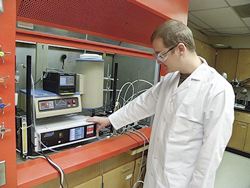
The University of Wyoming's Enhanced Oil Recovery Institute (EORI) will evaluate the potential of VeruTEK's Enhanced Oil Recovery (EOR) products for improving oil production in Wyoming formations. The research project will consist of bench scale testing and is expected to lead to field pilots with oil producers within the state.
VeruTEK oilfield chemicals combine plant-based solvents, nonionic surfactants and an innovative EOR Activator that generates heat and gas in place. These specialized chemical blends provide a higher performing and more broadly applicable alternative to harsh solvents, acids or caustics currently used in oil fields for drilling mud clean out; wellbore and near-field damage removal including clays, paraffins and asphaltenes; and advanced jetting and stimulation techniques.
In a related development, VeruTEK has announced a joint marketing agreement with Semjet, a provider of mechanical technologies for improving oil field productivity. The combined technologies provide a unique opportunity to substantially increase oil well productivity using VeruJET, a chemical blend optimized for jetting. The agreement extends both companies into a newly created market: high-performance fluids for jetting and stimulation.
Heavy oil and bitumen recovery optimization
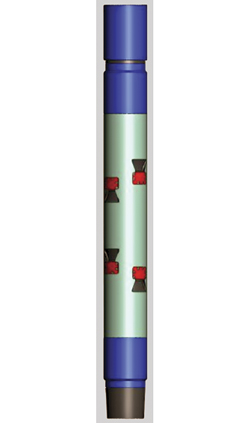
Regent Energy Group’s Staging Diverter Pup (SDP) is a custom-designed retrievable system with a multiport sliding sleeve assembly that allows users to modify the setup downhole and offers a multitude of options to control steam distribution. The SDP is a Peerless Completion System (intelligent well technology) and is used for optimal preferential control of steam injection to specific locations within the horizontal wellbore or optimal inflow production. Optimal outflow and inflow distribution control in horizontal wellbores can provide significant improvement on heavy oil and bitumen recovery. Steam injection into horizontal wellbores, however, may not always be distributed in a preferential manner (for example, equalized along the horizontal wellbore). The technology helps to improve the delivery and distribution of steam into the target formation by providing the ability to close off and open up sections of the wellbore, or change steam injection quantity-equalized steam distribution along the wellbore, coupled with sand control. This provides effective zonal isolation of steam into the formation to target specific locations within the reservoir. 
|







